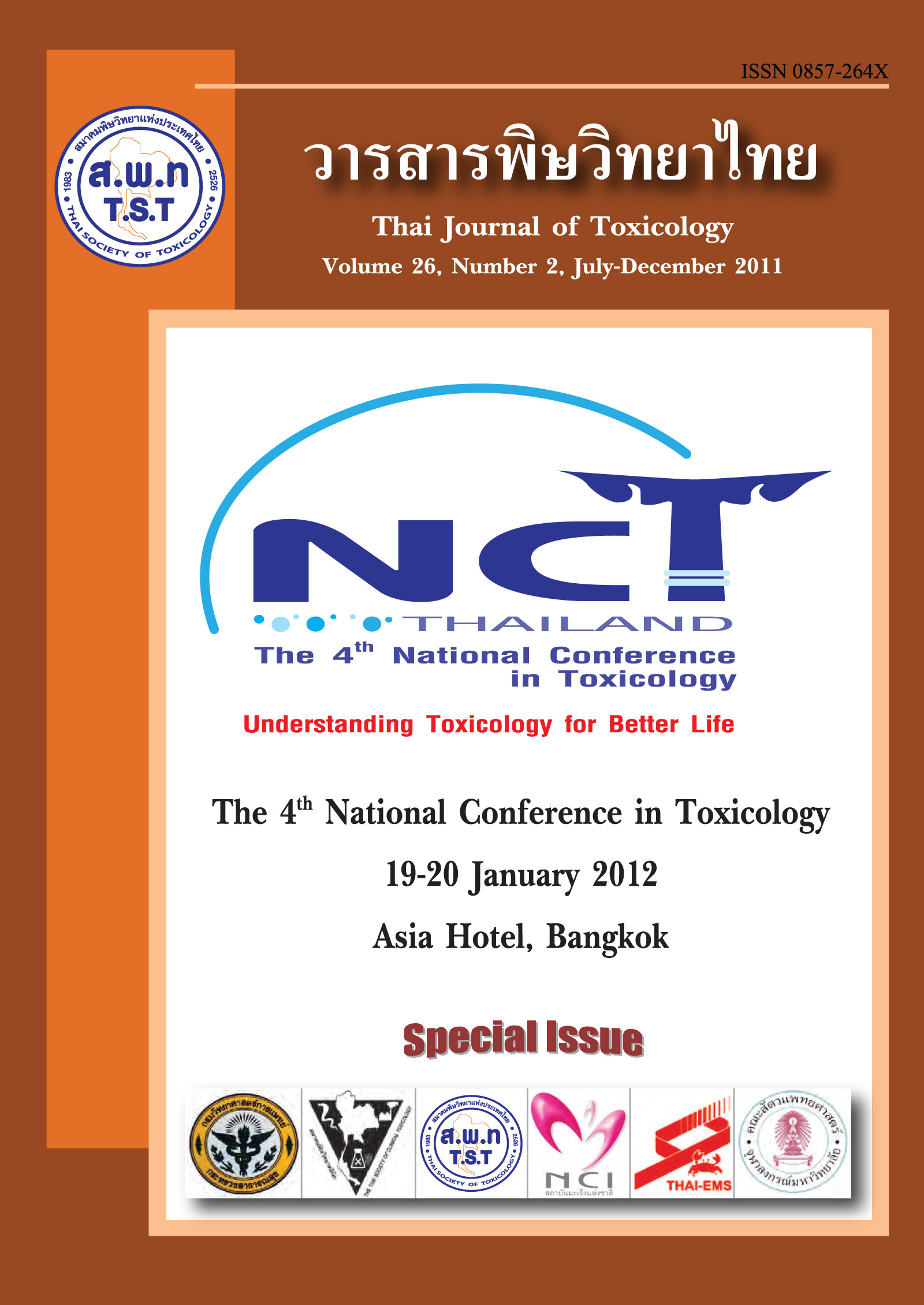Modulation of Cytochrome P450 Expression by Kojic Acid in Rats
Main Article Content
Abstract
Kojic acid is a naturally occurring compound used extensively as a food additive, as a food preservative, and as an ingredient in skin-lightening agents. A number of studies have reported possible toxicity and/or carcinogenicity of kojic acid, but the mechanisms involved remain unclear. We investigated effect of kojic acid on the expression of several cytochrome P450 isoforms in rats. Male F344 rats were orally administered various doses of kojic acid ranging from 0.6-1875 mg/kg bw for 14 days. High doses of kojic acid significantly decreased body weight and serum thyroxine levels, but increased liver and thyroid gland weights. The pattern of CYP2B1 protein expression in the livers of kojic acid treated rats showed kojic acid at the low dose significantly decreased the level of expression, but the medium and high doses significantly increased CYP2B1 expression. In addition, kojic acid treatment decreased CYP2E1 expression in rat livers. CYP2C11 was significantly decreased in livers of rats fed with the high dose of kojic acid. This is the first report that kojic acid influences protein expression of cytochrome P450 isozymes in rat liver, which in turn may promote liver and thyroid gland toxicity in rats.


